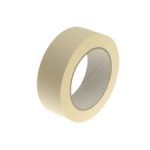How Is Masking Tape Made
 Known for its ability to seal the edges of surfaces to be painted and then be easily removed without damaging surfaces, masking tape requires both a specialized adhesive and an easy to handle backing.
Known for its ability to seal the edges of surfaces to be painted and then be easily removed without damaging surfaces, masking tape requires both a specialized adhesive and an easy to handle backing.
The tape backing for masking tape requires a paper that is thin enough to be torn by hand, so that no cutting tool is required. Some higher end masking tapes use a polymer film rather than paper, but this creates a much more expensive finished product.
The adhesive, which must be able to be removed without leaving residue, is a synthetic rubber with properties similar to organic latex-based rubber adhesive.
Large (much wider than the finished tape) sheets of the backing paper are passed through a roller after being coated with adhesive, using thousands of pounds of pressure to laminate the adhesive to the backing.
Once the adhesive has dried, it is run through slitting machines that cut it down to usable widths.
Finally, the slit masking tape is wound onto paper or plastic hubs and the final packaging is applied.
Allabouttape.com is your source for information about the adhesive tape industry. All the news about gaffers tape, safety tapes, duct tape, vinyl tapes and new developments in tape technology. Share your comments and questions with us.
